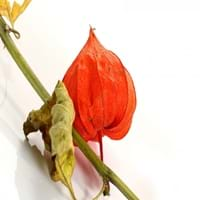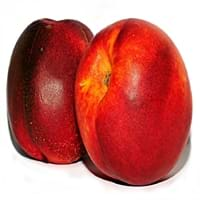Health Benefits
Anti-oxidant properties, Anti-inflammatory properties, Cancer prevention, Maintains healthy cholesterol level, Reduces blood circulation problems, Treatment of cough, fever & sore throat, Treatment of Hypertension
Cancer prevention, Heart care
General Benefits
Treatment of asthma, Treatment of cataract, Treatment of hepatitis, Treatment of macular degeneration, Treatment of neurodegenerative diseases
Anti oxidant properties, Boosts immune system, Digestive aid, Eye care, Helps in weight loss, Maintains healthy cholesterol level
Skin Benefits
Treatment of Rheumatism & Dermatitis, Treatment of Skin Inflammation
Anti-aging benefits, Reduces wrinkles, Skin rejuvenation
Hair Benefits
Unknown
Protects hair
Allergy Symptoms
NA
Anaphylaxis, Asthma, Breathing difficulty, Diarrhea, Hives, Itching, Itchy eyes, Skin rash, Sneezing, Swelling of mouth, tongue or lips, Tingling sensation in mouth, Vomiting, Watery eyes, Wheezing
Side Effects
Hypertension, Ventricular Tachycardia
Allergic reaction, Headache, Nausea
Best Time to Eat
As a snack in the late afternoon, Eat the fresh ones, avoid mixing with any other foods, don't eat after meal., Morning time (before lunch), Strictly avoid empty stomach
Best if taken as a breakfast (or empty stomach), As a snack in the late afternoon, Eat the fresh ones, avoid mixing with any other foods, don't eat after meal., Morning time (before lunch)
Vitamin B5 (Pantothenic Acid)
Not Available
Vitamin B6 (Pyridoxin)
Not Available
Vitamin B9 (Folic acid)
Not Available
Vitamin C (Ascorbic Acid)
Vitamin K (Phyllochinone)
Not Available
Lutein+Zeaxanthin
Not Available
Water Content
Not Available
Calories in Fresh Fruit with Peel
Calories in Fresh Fruit without Peel
Not Available
Not Available
Calories in Frozen Form
Not Available
Not Available
Calories in Dried Form
Not Available
Calories in Canned Form
Not Available
Not Available
Type
Fruit vegetable
Tree fruit
Season
Spring, Summer
Autumn, Summer
Varieties
Physalis franchetii, Physalis pruinosa, Physalis peruviana, Physalis heterophylla and Physalis philadelphica
Arctic Jay, Artic Rose, Artic Star, Armking, Desert Dawn, Fairlane, Fantasia, Silver Lode, Snow Queen, Stanwick and Stark Sunglo
Color
Bright Yellow, Orange
Orange, Pink, Red, Yellow
Inside Color
Orange
Yellow
Climatic Conditions
NA
Sunny, Warm
Facts about
NA
- The name ‘nectarine’ is with reference to the sweet food the gods eat, ‘nectar’.
- Nectarines are sometimes called ‘shaved peaches’ because their skin is smooth with no fuzz.
Other Countries
NA
Argentina, Chile, Egypt, Greece, Iran, Italy, Spain, Turkey, United States of America
Top Importer
Netherlands
Germany
Top Exporter
Colombia
Spain
Botanical Name
Physalis Peruviana
Prunus persica
Synonym
Alkekengi, Herschellia & Pentaphitrum
Not Available
Subkingdom
Tracheobionta
Tracheobionta
Division
Magnoliophyta
Magnoliophyta
Class
Magnoliopsida
Magnoliopsida
Subclass
Asteridae
Rosidae
Family
Solanaceae
Rosaceae
Species
Physalis
P. persica
Generic Group
Not Available
Rose
Difference Between Physalis and Nectarine
We might think that Physalis and Nectarine are similar with respect to nutritional value and health benefits. But the nutrient content of both fruits is different. Physalis and Nectarine Facts such as their taste, shape, color, and size are also distinct. The difference between Physalis and Nectarine is explained here.
The amount of calories in 100 gm of fresh Physalis and Nectarine with peel is 77.00 kcal and 44.00 kcal and the amount of calories without peel is Not Available and Not Available respectively. Thus, Physalis and Nectarine belong to High Calorie Fruits and Low Calorie Fruits category.These fruits might or might not differ with respect to their scientific classification. The order of Physalis and Nectarine is Solanales and Rosales respectively. Physalis belongs to Solanaceae family and Nectarine belongs to Rosaceae family. Physalis belongs to Physalis genus of Physalis species and Nectarine belongs to Prunus genus of P. persica species. Beings plants, both fruits belong to Plantae Kingdom.









